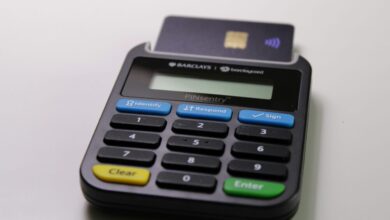SafeWallet: A Comprehensive Exploration of Its Design, Functionality, and Security

As cryptocurrencies have become increasingly popular, the need for reliable and secure tools to manage digital assets has become more critical than ever. SafeWallet, a secure and versatile crypto wallet developed by SafeCryptoWallet.io, aims to provide users with an innovative solution for storing, managing, and transacting cryptocurrencies. This article offers a detailed overview of SafeWallet, focusing on the process of generating unique wallet addresses, its design and functionality, password management, and more.
In this article, we will look into the concepts surrounding cryptocurrency wallets in general, how SafeWallet fits into the crypto ecosystem, and examine the functionality of SafeWallet’s core features.
Definition: What Is a Crypto Wallet?
A cryptocurrency wallet, also known as a crypto wallet, is a digital tool that allows users to securely store, manage, and transact cryptocurrencies like Bitcoin, Ethereum, and other digital assets. These wallets can be used for a wide variety of purposes, from managing large amounts of cryptocurrency for long-term storage to executing regular transactions or interacting with decentralized applications (dApps).
Crypto wallets do not store cryptocurrencies in a traditional sense; instead, they store private keys, which grant users access to their assets recorded on a blockchain. These keys are essential for validating and securing transactions, ensuring that only the rightful owner has access to their crypto assets.
Types of Crypto Wallets
Cryptocurrency wallets come in different types, each designed to balance convenience, functionality, and security. The two primary categories of wallets are hot wallets and cold wallets.
Hot Wallets
Hot wallets are those connected to the internet, making them convenient for frequent transactions. Because of their connectivity, they are more susceptible to cyberattacks and hacks. Hot wallets are ideal for users who need quick access to their funds but also come with higher security risks. Examples include mobile wallets, web wallets, and some desktop wallets.
Cold Wallets
Cold wallets, on the other hand, are offline and are therefore considered far more secure. They are typically used for long-term storage of cryptocurrencies. Examples of cold wallets include hardware wallets and paper wallets, which store private keys offline, away from potential online vulnerabilities.
SafeWallet: An Overview
SafeWallet stands out among crypto wallets for its robust security features and user-friendly design. Built by SafeCryptoWallet.io, SafeWallet has been carefully designed to cater to both beginners and advanced crypto users, making it easy to store, manage, and transact digital assets while offering top-tier security measures. The platform strikes an optimal balance between convenience and security.
SafeWallet Address Generation
One of the most critical components of SafeWallet’s functionality is the process of generating unique wallet addresses. When a user creates a new wallet in SafeWallet, the app generates a unique cryptographic key pair. This key pair consists of a public key and a private key.
- Public Key: Functions like an account number that can be shared with others to receive payments. It is mathematically linked to the private key and is used to derive the wallet address. Users can freely share their public keys without compromising the security of their funds.
- Private Key: Acts as the password or secret key to the user’s wallet. This key must never be shared, as it grants full control over the wallet’s funds. The private key is required for signing transactions and proving ownership of the associated funds.
The wallet address is generated by running the public key through a hashing algorithm, ensuring that each wallet is uniquely identifiable on the blockchain. SafeWallet’s process for generating addresses is secure, ensuring that users’ private keys are kept confidential and are never exposed during the generation process.
Design and Functionality of Passwords
SafeWallet’s password management system is designed with user security as its priority. The passwords are used in conjunction with a private key to access the wallet, adding an extra layer of protection. SafeWallet requires users to create a strong, complex password when setting up their wallet.
Recovery Phrase
A core security feature of SafeWallet is its recovery phrase, also known as a seed phrase. Upon setting up a new wallet, users are provided with a recovery phrase that typically consists of 12 random words. This phrase is essential for recovering access to the wallet if the user’s device is lost or damaged. The recovery phrase should be stored in a secure, offline location, as anyone who obtains it can access the associated wallet.
Ownership and the Role of Private Keys
A key concept in understanding cryptocurrency wallets like SafeWallet is that they do not store actual cryptocurrencies. Instead, they store private keys, which serve as proof of ownership and allow users to access the cryptocurrencies recorded on the blockchain.
The blockchain itself is a distributed ledger that records all transactions, and cryptocurrencies are represented as balances associated with a particular public address. Accessing these funds requires the corresponding private key, which is why safeguarding the private key is of utmost importance.
In non-custodial wallets like SafeWallet, users have full control over their private keys. This contrasts with custodial wallets, where a third-party entity (such as a cryptocurrency exchange) holds the private keys on behalf of the user. While custodial wallets offer convenience, they also introduce risks, as users must trust the third party to keep their funds safe.
Hot Wallets vs. Cold Wallets
As mentioned earlier, crypto wallets can be categorized into hot wallets and cold wallets. Each category has its strengths and weaknesses, and the choice between the two often depends on the user’s specific needs.
Hot Wallets
Hot wallets are always connected to the internet, making them perfect for users who need frequent access to their cryptocurrencies. SafeWallet, as a mobile and software-based wallet, can be categorized as a hot wallet. Its constant connectivity allows for seamless transactions and quick access to funds, making it ideal for everyday use.
However, the trade-off is that hot wallets are more vulnerable to hacking attempts, malware, and phishing attacks. SafeWallet mitigates these risks through strong encryption, two-factor authentication, and secure password management.
Cold Wallets
Cold wallets, such as hardware wallets or paper wallets, store private keys offline. This makes them immune to most forms of online attacks, as there is no internet connection through which a hacker can gain access. Cold wallets are generally recommended for long-term storage of large amounts of cryptocurrency that do not need to be frequently accessed.
Hardware wallets, like those offered by Ledger or Trezor, are popular cold wallet options. These devices store private keys in a secure, offline environment, ensuring maximum security.
Mobile Wallets
Mobile wallets, such as SafeWallet, are highly convenient for users who need to access their crypto on the go. These wallets are apps installed on smartphones and allow users to store, send, and receive cryptocurrency at their fingertips.
SafeWallet’s mobile app is designed for ease of use without compromising security. It integrates with blockchain networks to allow users to quickly access their assets and perform transactions while maintaining a high level of protection for private keys.
Hardware Wallets
Hardware wallets are physical devices that store private keys offline. They are considered one of the most secure ways to store cryptocurrency. Since the private keys are never exposed to the internet, they are safe from online attacks.
While SafeWallet does not function as a hardware wallet, it can integrate with hardware wallets to provide an additional layer of security for users who prefer cold storage for long-term assets.
Software Wallets
Software wallets are digital programs that run on computers or mobile devices. SafeWallet, as a software wallet, provides a user-friendly interface for managing crypto assets. It offers advanced features such as password encryption, and support for multiple cryptocurrencies.
Software wallets, while convenient, are considered hot wallets and are therefore more vulnerable to online attacks compared to hardware wallets.
Custodial vs. Non-Custodial Wallets
SafeWallet is a non-custodial wallet, meaning that users have full control over their private keys. This contrasts with custodial wallets, which are managed by third parties such as exchanges.
The non-custodial nature of SafeWallet gives users complete ownership of their crypto assets and reduces the risk associated with trusting third parties with private keys. However, it also means that users are solely responsible for safeguarding their private keys and recovery phrases.
Backup Importance and Recovery Phrases
Regular backups are critical for securing any cryptocurrency wallet. SafeWallet provides users with a recovery phrase during the wallet creation process. This recovery phrase is the key to restoring access to the wallet if the device it is installed on is lost, stolen, or damaged.
Without the recovery phrase, users could permanently lose access to their funds. Therefore, SafeWallet advises users to store the recovery phrase in a secure, offline location, such as a safe, to prevent unauthorized access.
Security Best Practices
SafeWallet places a strong emphasis on security. Here are some of the best practices recommended by SafeWallet to ensure the safety of user funds:
- Store Private Keys Offline: While SafeWallet provides secure storage for private keys, users who store large amounts of cryptocurrency should consider keeping their private keys offline, either in a hardware wallet or a paper wallet.
- Backup Your Recovery Phrase: The recovery phrase is critical for restoring access to your wallet. Always store it in a secure location, and never share it with anyone.
- Use Strong Passwords: SafeWallet requires users to set up strong passwords to access their wallets. Using a complex, unique password significantly reduces the chances of being hacked.
- Beware of Phishing Scams: Phishing attacks are a common method used by hackers to steal private keys and recovery phrases. Users should be cautious of emails, websites, or messages that ask for sensitive information and always ensure they are interacting with the legitimate SafeWallet platform.
Paper Wallets and Staking
While SafeWallet does not primarily function as a paper wallet, users can generate paper wallets as an extra layer of security. A paper wallet involves printing out the private and public keys on a piece of paper, which can be stored offline.
Cross-Platform Compatibility
SafeWallet offers cross-platform compatibility, meaning it can be used across multiple devices. Whether on a desktop, mobile phone, or tablet, users can access their SafeWallet account and manage their crypto assets seamlessly across all devices. This feature is particularly useful for users who need flexibility in how they manage their cryptocurrency holdings.
Conclusion
SafeWallet is a powerful and secure solution for managing cryptocurrencies. Its design and functionality prioritize user security, offering features like password encryption, two-factor authentication, multi-signature capabilities, and a recovery phrase for wallet recovery. With the ability to manage multiple cryptocurrencies, stake assets, and integrate with both hot and cold wallets, SafeWallet provides a versatile platform for both novice and experienced crypto users.
By adhering to best practices in password management, backing up recovery phrases, and taking advantage of advanced security features, SafeWallet users can confidently manage their digital assets while minimizing the risk of unauthorized access or loss. Whether for regular transactions or long-term storage, SafeWallet is positioned as a reliable tool in the ever-evolving world of cryptocurrencies.





